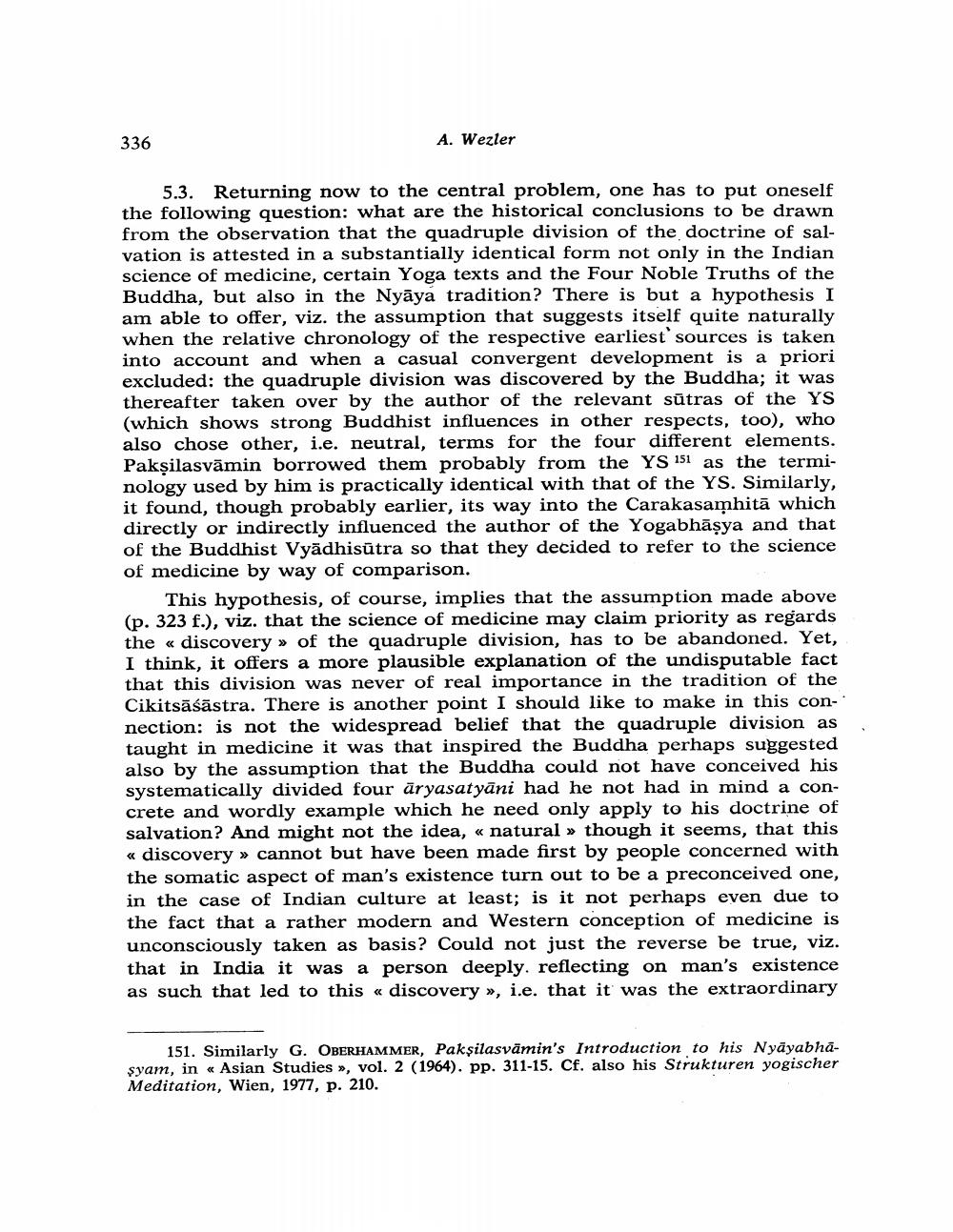________________
336
A. Wezler
5.3. Returning now to the central problem, one has to put oneself the following question: what are the historical conclusions to be drawn from the observation that the quadruple division of the doctrine of salvation is attested in a substantially identical form not only in the Indian science of medicine, certain Yoga texts and the Four Noble Truths of the Buddha, but also in the Nyāya tradition? There is but a hypothesis I am able to offer, viz. the assumption that suggests itself quite naturally when the relative chronology of the respective earliest sources is taken into account and when a casual convergent development is a priori excluded: the quadruple division was discovered by the Buddha; it was thereafter taken over by the author of the relevant sūtras of the YS (which shows strong Buddhist influences in other respects, too), who also chose other, i.e. neutral, terms for the four different elements. Paksilasvāmin borrowed them probably from the YS 151 as the terminology used by him is practically identical with that of the YS. Similarly, it found, though probably earlier, its way into the Carakasamhitā which directly or indirectly influenced the author of the Yogabhāşya and that of the Buddhist Vyādhisūtra so that they decided to refer to the science of medicine by way of comparison.
This hypothesis, of course, implies that the assumption made above (p. 323 f.), viz. that the science of medicine may claim priority as regards the « discovery » of the quadruple division, has to be abandoned. Yet, I think, it offers a more plausible explanation of the undisputable fact that this division was never of real importance in the tradition of the Cikitsāśāstra. There is another point I should like to make in this connection: is not the widespread belief that the quadruple division as taught in medicine it was that inspired the Buddha perhaps suggested also by the assumption that the Buddha could not have conceived his systematically divided four āryasatyāni had he not had in mind a concrete and wordly example which he need only apply to his doctrine of salvation? And might not the idea, « natural » though it seems, that this « discovery >> cannot but have been made first by people concerned with the somatic aspect of man's existence turn out to be a preconceived one, in the case of Indian culture at least; is it not perhaps even due to the fact that a rather modern and Western conception of medicine is unconsciously taken as basis? Could not just the reverse be true, viz. that in India it was a person deeply. reflecting on man's existence as such that led to this « discovery », i.e. that it was the extraordinary
151. Similarly G. OBERHAMMER, Paksilasvamin's Introduction to his Nyāyabhasyam, in « Asian Studies », vol. 2 (1964). pp. 311-15. Cf. also his Strukturen yogischer Meditation, Wien, 1977, p. 210.




